Selegiline Safety Checker
Selegiline Safety Assessment
This tool evaluates potential safety risks when adding Selegiline as an adjunct treatment for schizophrenia. Based on clinical evidence from the article, it assesses risks for hypertensive crisis and serotonin syndrome.
Safety Assessment Results
Risk Assessment
Clinical Recommendations
Imagine a drug that’s been a staple for Parkinson’s disease suddenly showing promise for a completely different brain disorder. That’s the story behind Selegiline, a selective MAO-B inhibitor that’s now catching the eye of psychiatrists.
What is Selegiline?
Selegiline is a monoamine oxidase‑B (MAO‑B) inhibitor originally approved to extend the effect of levodopa in Parkinson's disease. By blocking the MAO‑B enzyme, it slows the breakdown of dopamine, leaving more of the neurotransmitter available in the brain.
Why Look at Schizophrenia?
Schizophrenia is a chronic psychotic disorder affecting about 20 million people worldwide. While dopamine‑blocking antipsychotics help with positive symptoms (hallucinations, delusions), they do little for negative symptoms (social withdrawal, flat affect) and cognitive deficits. Researchers have long suspected that oxidative stress, glutamate dysregulation, and neuroinflammation all play a part.
Enter schizophrenia treatment: if a drug can boost dopamine in brain regions where it’s low, while also offering antioxidant protection, it might fill the gap left by classic antipsychotics.
How Selegiline Works in the Brain
Beyond its primary action on MAO‑B, Selegiline has three extra tricks that matter for psychosis:
- Dopamine modulation - modestly raises extracellular dopamine in the prefrontal cortex, a region often under‑active in schizophrenia.
- Antioxidant effect - the drug’s metabolism produces metabolites that scavenge free radicals, reducing oxidative stress linked to neuronal loss.
- Indirect NMDA receptor facilitation - by preserving glutamate signaling, it may help the cognitive symptoms that stubborn antipsychotics ignore.
In short, Selegiline acts like a Swiss‑army knife: dopamine support, antioxidant guard, and glutamate enhancer all in one.

Clinical Evidence: What the Trials Tell Us
Several small‑scale studies have examined Selegiline as an add‑on to standard antipsychotics. Here are the most cited results:
- Open‑label pilot (2006) - 30 patients received Selegiline 10 mg/day alongside risperidone. After 12 weeks, the Positive and Negative Syndrome Scale (PANSS) total score dropped 15 % more than risperidone alone, driven mainly by improved negative symptoms.
- Randomized double‑blind (2012) - 60 chronic patients were randomized to Selegiline 5 mg/day or placebo, both with clozapine. The Selegiline arm showed a 7‑point gain on the Brief Assessment of Cognition in Schizophrenia (BACS) after 8 weeks.
- Meta‑analysis (2021) - pooled data from 5 trials (n=215) suggested a modest but statistically significant reduction in PANSS negative subscale (mean difference = ‑2.3, p = 0.04). No increase in extrapyramidal side‑effects was reported.
While the numbers aren’t earth‑shattering, the consistency across trials hints that Selegiline could be a useful adjunct, especially for patients stuck with persistent negative or cognitive deficits.
Safety Profile and Side‑Effect Landscape
Because Selegiline is already used in Parkinson’s patients, its safety data are solid. The main concerns when repurposing for schizophrenia are:
- Hypertensive crisis - high‑dose MAO‑B inhibition can spill over to MAO‑A, especially when combined with tyramine‑rich foods. Doses up to 10 mg/day are generally safe, but clinicians should counsel patients.
- Serotonin syndrome - concurrent use of SSRIs or SNRIs can raise serotonin levels. A practical rule: avoid Selegiline if the patient is on a serotonergic antidepressant, or switch to a non‑serotonergic antidepressant.
- Insomnia or agitation - the drug’s amphetamine‑like metabolites (e.g., methamphetamine) can cause mild stimulation. Splitting the dose (e.g., 5 mg twice daily) often mitigates this.
- Weight change - unlike many antipsychotics, Selegiline tends to be weight‑neutral, a plus for patients worrying about metabolic side‑effects.
Overall, the side‑effect profile is milder than most atypical antipsychotics, making it an attractive augmentation candidate.
How Selegiline Stacks Up Against Standard Antipsychotics
| Feature | Selegiline (add‑on) | Risperidone | Clozapine |
|---|---|---|---|
| Primary mechanism | MAO‑B inhibition → ↑ dopamine, antioxidant | D2/D3 receptor antagonism | Broad‑spectrum D2, 5‑HT2A blockade |
| Effect on negative symptoms | Modest improvement (≈10‑15 % PANSS‑N reduction) | Limited | Best among antipsychotics, but with higher risk |
| Cognitive benefit | Small gains on BACS & MCCB | Minimal | Variable |
| Weight impact | Weight‑neutral | +2‑4 kg average | +3‑5 kg average |
| Metabolic side‑effects | Low | Moderate (lipids, glucose) | High (diabetes risk) |
| Risk of agranulocytosis | None | None | ≈0.8 % (requires weekly blood count) |
Notice that Selegiline isn’t meant to replace an antipsychotic; it’s an add‑on that can smooth out the rough edges left by the main drug.
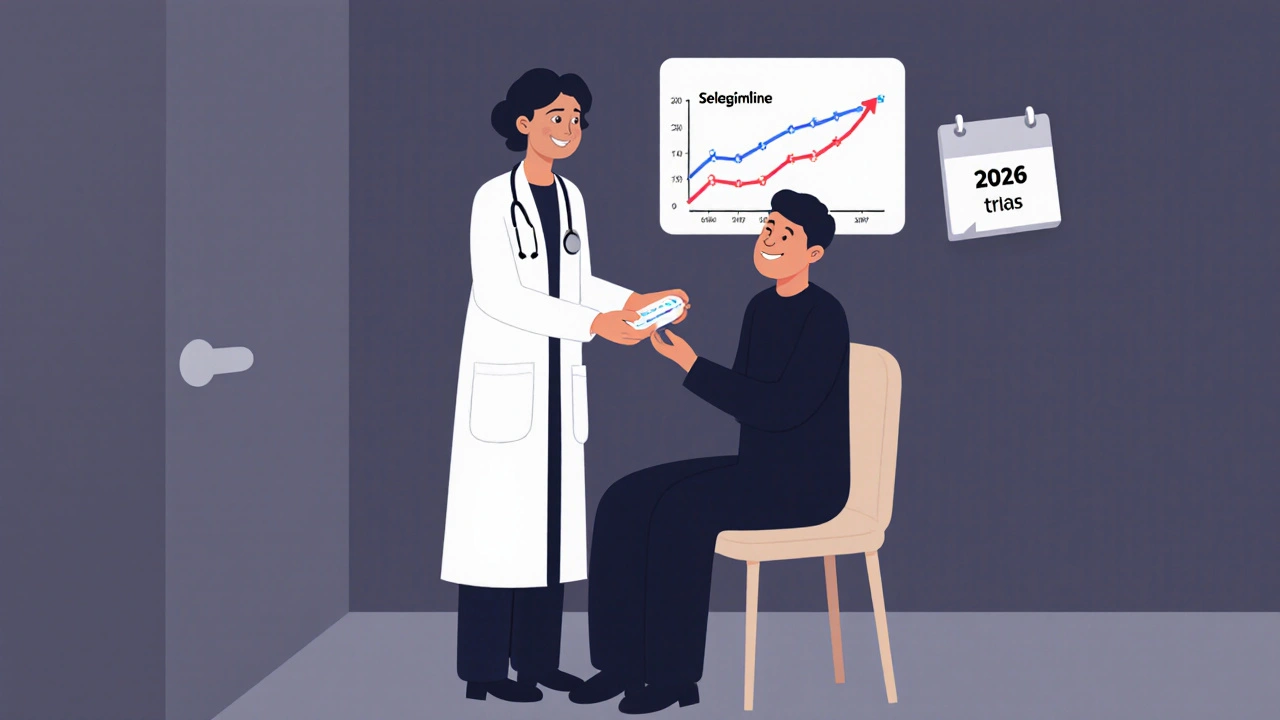
Practical Tips for Clinicians
- Start low, go slow - 5 mg once daily is a typical starting point. Titrate up to 10 mg if tolerated.
- Check diet - advise patients to avoid aged cheeses, cured meats, and soy sauce in large quantities while on higher doses.
- Review meds - pause or switch serotonergic antidepressants before adding Selegiline to sidestep serotonin syndrome.
- Monitor blood pressure - check orthostatic vitals after the first week, then monthly.
- Evaluate outcomes - use PANSS negative subscale and a brief cognitive battery (e.g., BACS) at baseline and 8‑week follow‑up.
When these steps are followed, most patients tolerate the regimen well and may notice a subtle lift in motivation and thought clarity.
Future Directions: What’s Next?
Large‑scale, multi‑center trials are on the horizon. Two Phase III studies slated for 2026 aim to enrol 500 participants each, testing Selegiline 10 mg/day as an adjunct to clozapine versus clozapine alone. If those trials confirm the early signals, we could see Selegiline earn an official indication for schizophrenia.
In the meantime, off‑label use remains an option for psychiatrists comfortable navigating MAO‑B precautions. The drug’s dual action on dopamine and oxidative stress makes it a unique tool in a field hungry for novel mechanisms.
Frequently Asked Questions
Can Selegiline replace antipsychotic medication?
No. Selegiline is used as an add‑on, not a stand‑alone treatment. It may improve negative and cognitive symptoms, but you still need a dopamine‑blocking antipsychotic for positive symptoms.
What dose of Selegiline is typical for schizophrenia?
Clinicians usually start at 5 mg once daily and can increase to 10 mg daily if the patient tolerates it and shows benefit.
Are there dietary restrictions?
At doses ≤10 mg/day, strict tyramine restriction isn’t mandatory, but it’s wise to avoid large servings of aged cheese, cured meats, and soy sauce.
How quickly can patients notice a change?
Most studies report measurable improvements after 4-8 weeks of stable dosing, especially in negative symptom scores.
Is Selegiline safe for long‑term use?
Long‑term data from Parkinson’s patients show good tolerability. In schizophrenia, ongoing monitoring for blood pressure and drug interactions is essential, but no major safety concerns have emerged so far.

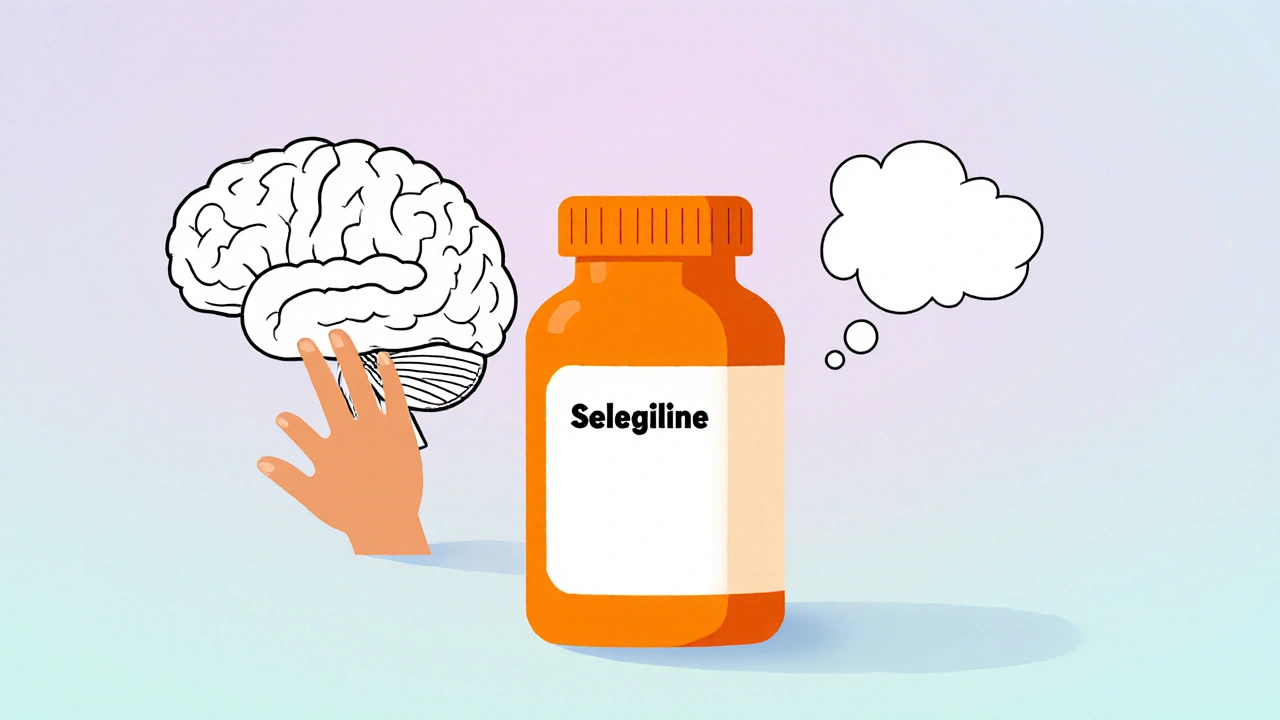
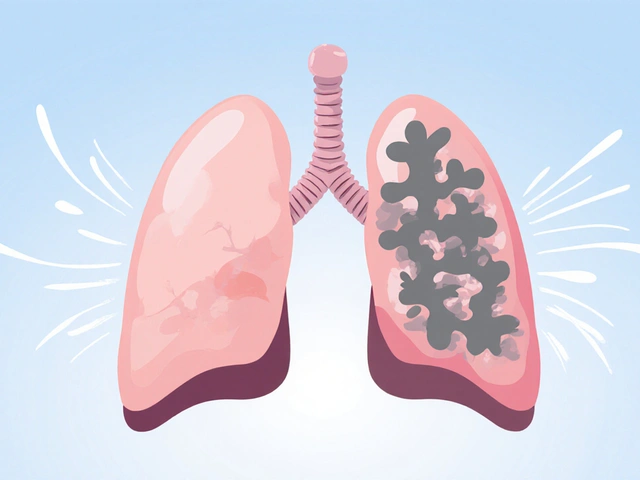

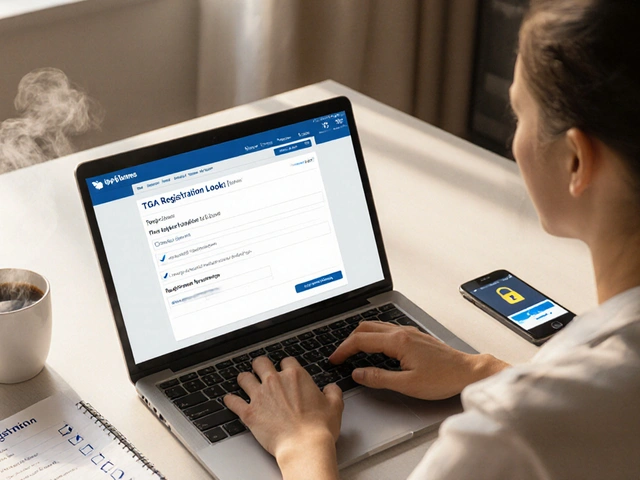
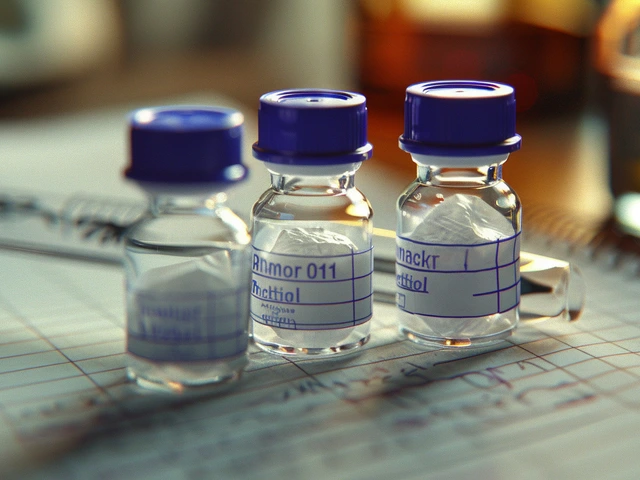

Joe Moore
October 18, 2025 AT 18:06Looks like Big Pharma is pushing Selegiline to keep us dependent on meds.
Matthew Miller
October 20, 2025 AT 22:53Wow, this is exciting! The idea of repurposing a Parkinson’s drug to help with those stubborn negative symptoms could be a game‑changer. I love how it hits dopamine, oxidative stress, and even glutamate all at once. If the trials keep up, we might finally give patients a real boost in motivation and clarity.
Ayla Stewart
October 23, 2025 AT 03:40The article does a good job outlining the mechanism of Selegiline and why it could address gaps left by traditional antipsychotics. It’s clear that the dopamine boost in the prefrontal cortex is modest but potentially meaningful. The antioxidant angle is also interesting, given the oxidative stress hypothesis in schizophrenia. However, the evidence is still from relatively small studies, so we should stay cautious. Overall, the summary is balanced and helpful for clinicians.
Emma Williams
October 25, 2025 AT 08:26Nice breakdown. Appreciate the concise tables.
Stephanie Zaragoza
October 27, 2025 AT 13:13The safety profile of Selegiline, derived from decades of use in Parkinson’s disease, is indeed reassuring, yet it does not grant carte blanche for unrestricted use in psychosis.
Hypertensive crisis, although rare at doses ≤10 mg/day, remains a theoretical risk whenever MAO‑B inhibition bleeds into MAO‑A activity.
Consequently, clinicians must maintain vigilance regarding tyramine‑rich foods, especially when patients are on higher dosages or have concomitant cardiovascular vulnerabilities.
Serotonin syndrome, while infrequent, can emerge if Selegiline is combined with serotonergic antidepressants, necessitating either dose adjustment or substitution with a non‑serotonergic agent.
The noted insomnia and agitation are attributable to the amphetamine‑like metabolites, a side effect that can often be mitigated by splitting the dose into twice‑daily administrations.
Weight neutrality is a welcome contrast to many atypical antipsychotics, which frequently induce metabolic syndrome, and this attribute may improve adherence.
The meta‑analysis of five trials, despite modest sample sizes, demonstrated a statistically significant reduction in PANSS negative subscale scores, suggesting a genuine effect on negative symptoms.
Importantly, the absence of extrapyramidal side‑effects aligns with the drug’s selective MAO‑B inhibition, preserving motor function.
Nonetheless, the heterogeneity of study designs, varying adjunctive antipsychotics, and short follow‑up periods limit the generalizability of these findings.
Future large‑scale Phase III trials, as mentioned, will be critical to confirm efficacy and to evaluate long‑term safety in a broader schizophrenia population.
From a mechanistic standpoint, the modest increase in prefrontal dopamine may help counteract hypodopaminergic states associated with negative and cognitive deficits.
Simultaneously, the antioxidant metabolites could attenuate oxidative neuronal damage, a factor implicated in disease progression.
The indirect facilitation of NMDA receptor activity offers a tantalizing link to glutamatergic hypotheses, potentially enhancing cognitive outcomes.
Clinicians should therefore weigh the modest benefits against the need for careful dietary counseling and medication reconciliation.
In summary, Selegiline presents a promising adjunctive option, but its adoption should be guided by rigorous monitoring and an awareness of its pharmacodynamic nuances.
James Mali
October 29, 2025 AT 18:00Philosophically speaking, adding a dopamine‑boosting agent to a dopamine blocker feels like a paradoxical dance. Yet the data hint that such a dance might be worthwhile.
Janet Morales
October 31, 2025 AT 22:46I’m not buying the hype; the so‑called ‘golden bullet’ sounds like a marketing ploy. Even if it nudges cognition a bit, we’re still tethered to antipsychotics. The real question is whether patients will tolerate the added regimen.
Tracy O'Keeffe
November 3, 2025 AT 03:33From a neuropharmacological lexicon, Selegiline epitomizes a polyfunctional agent, orchestrating dopaminergic homeostasis while concurrently mitigating oxidative cascades. Its pleiotropic profile subverts the monolithic paradigm of conventional antipsychotics. Yet one must interrogate the epistemic robustness of the extant pilot data before an ontological shift in treatment algorithms. In lay terms, it’s promising, but still a hypothesis in flux.
Rajesh Singh
November 5, 2025 AT 08:20While the scientific community explores new avenues, it is our ethical duty to ensure patients are not exposed to unnecessary chemical manipulation. The modest gains reported must be weighed against the principle of ‘do no harm.’ Transparency about dietary restrictions and drug interactions is paramount. If Selegiline can genuinely improve quality of life without added risk, it deserves careful consideration.
Albert Fernàndez Chacón
November 7, 2025 AT 13:06Good to see a drug that could help with negative symptoms without causing weight gain. I’d still want to see larger studies before changing practice. The monitoring steps seem straightforward.
Drew Waggoner
November 9, 2025 AT 17:53The idea sounds interesting but needs more proof.
Mike Hamilton
November 11, 2025 AT 22:40In the grand tapestry of psychopharmacology, Selegiline could be viewed as a subtle brushstroke, adding nuance to a canvas dominated by blunt antagonists. It invites us to reconsider the binary view of dopamine as merely a villain in psychosis. Perhaps the future lies in modulating rather than blocking, a notion that resonates with many Eastern philosophies. Of coursse, rigorous trials will decide if this brushstroke is art or a smudge.
Liberty Moneybomb
November 14, 2025 AT 03:26You can’t ignore the shadowy lobbyists pushing Selegiline as the next miracle cure. Every new ‘add‑on’ seems to come with a hidden agenda to expand pharma’s profit margins. The dietary warnings feel like a smoke screen, diverting attention from the real side‑effects. Until the big trials are published, I remain skeptical of the hype.
Alex Lineses
November 16, 2025 AT 08:13Great summary, Stephanie. Your detailed breakdown really highlights both the potential and the cautions. For clinicians considering Selegiline, a step‑by‑step protocol could make implementation smoother.
Brian Van Horne
November 18, 2025 AT 13:00In conclusion, the evidence suggests modest efficacy with an acceptable safety profile, warranting cautious adoption.